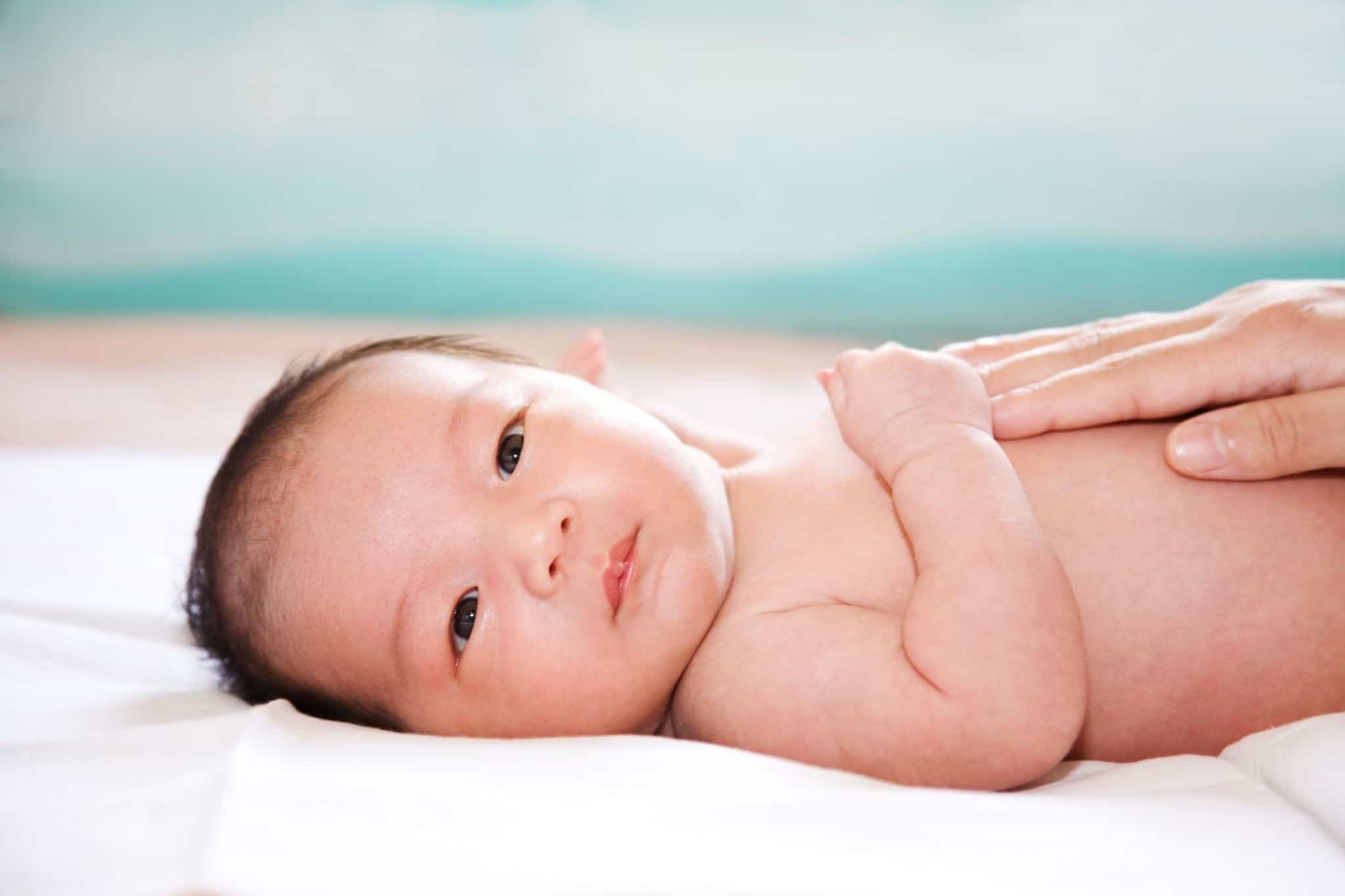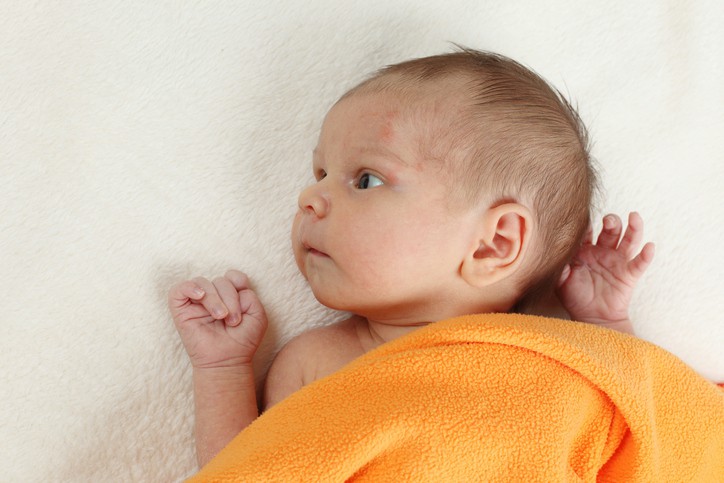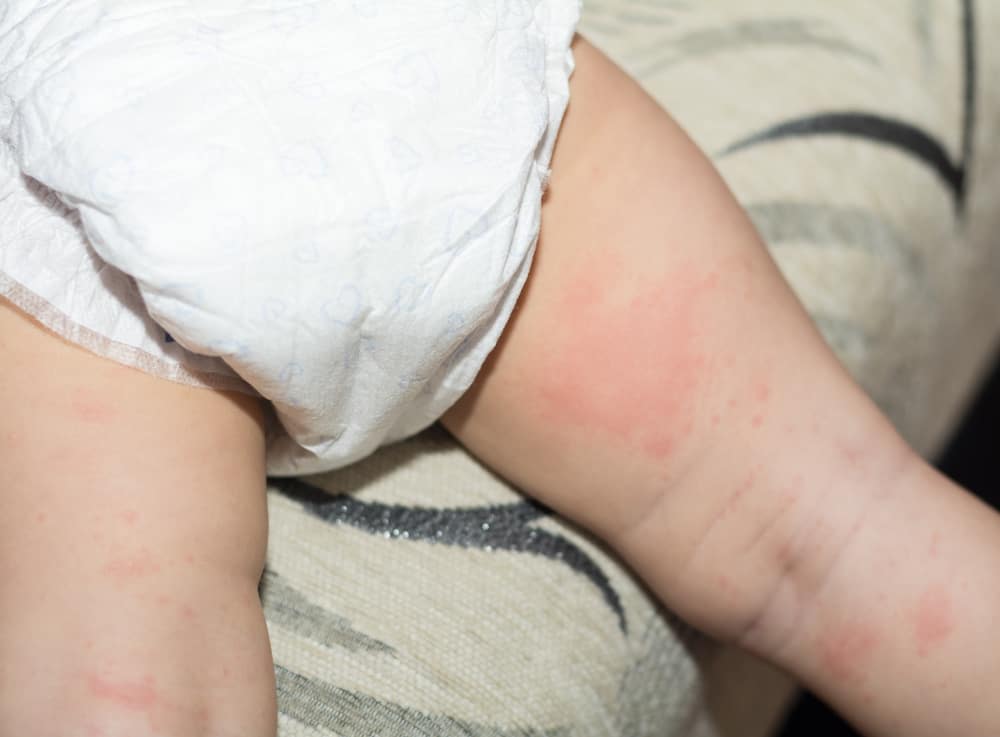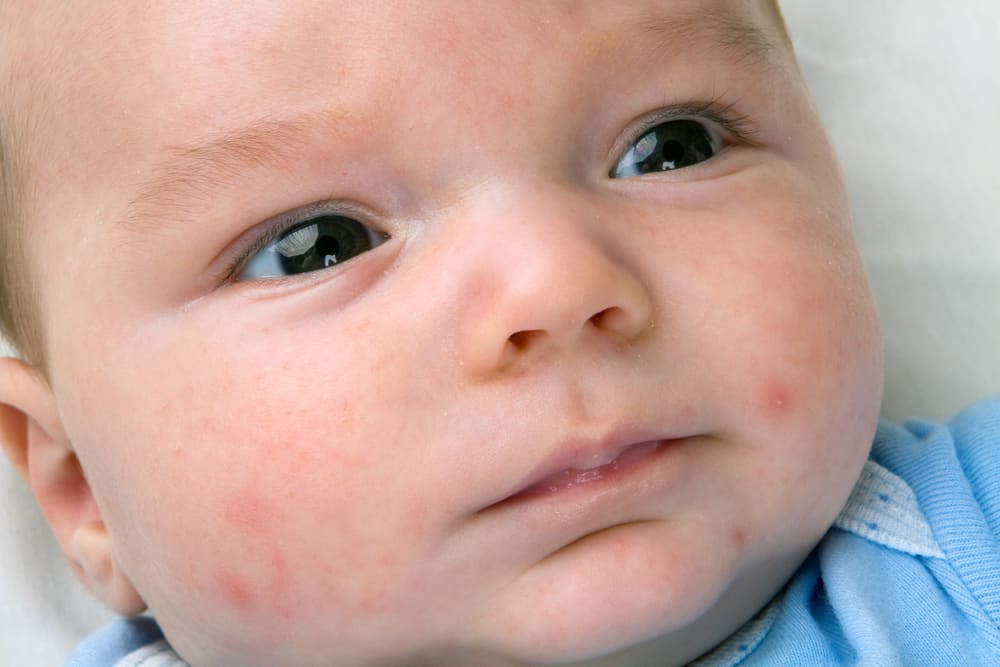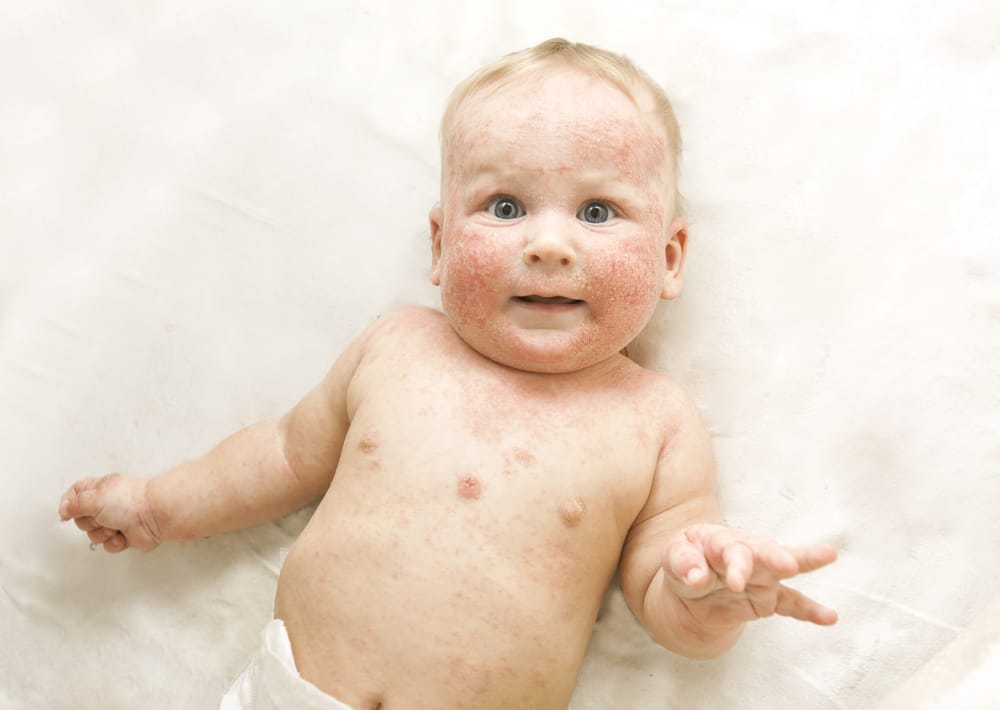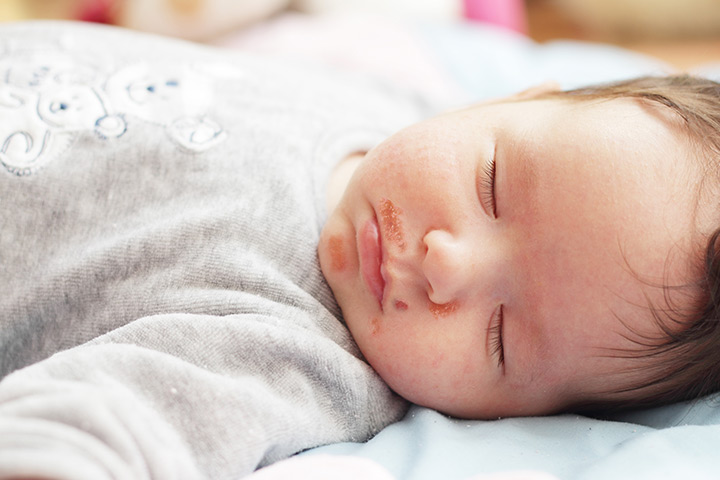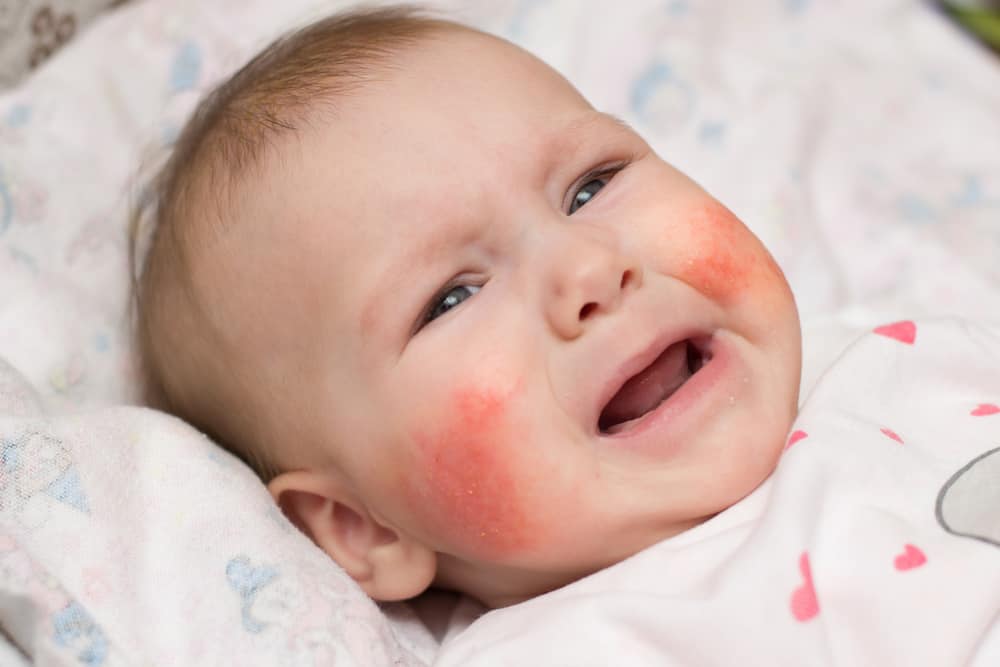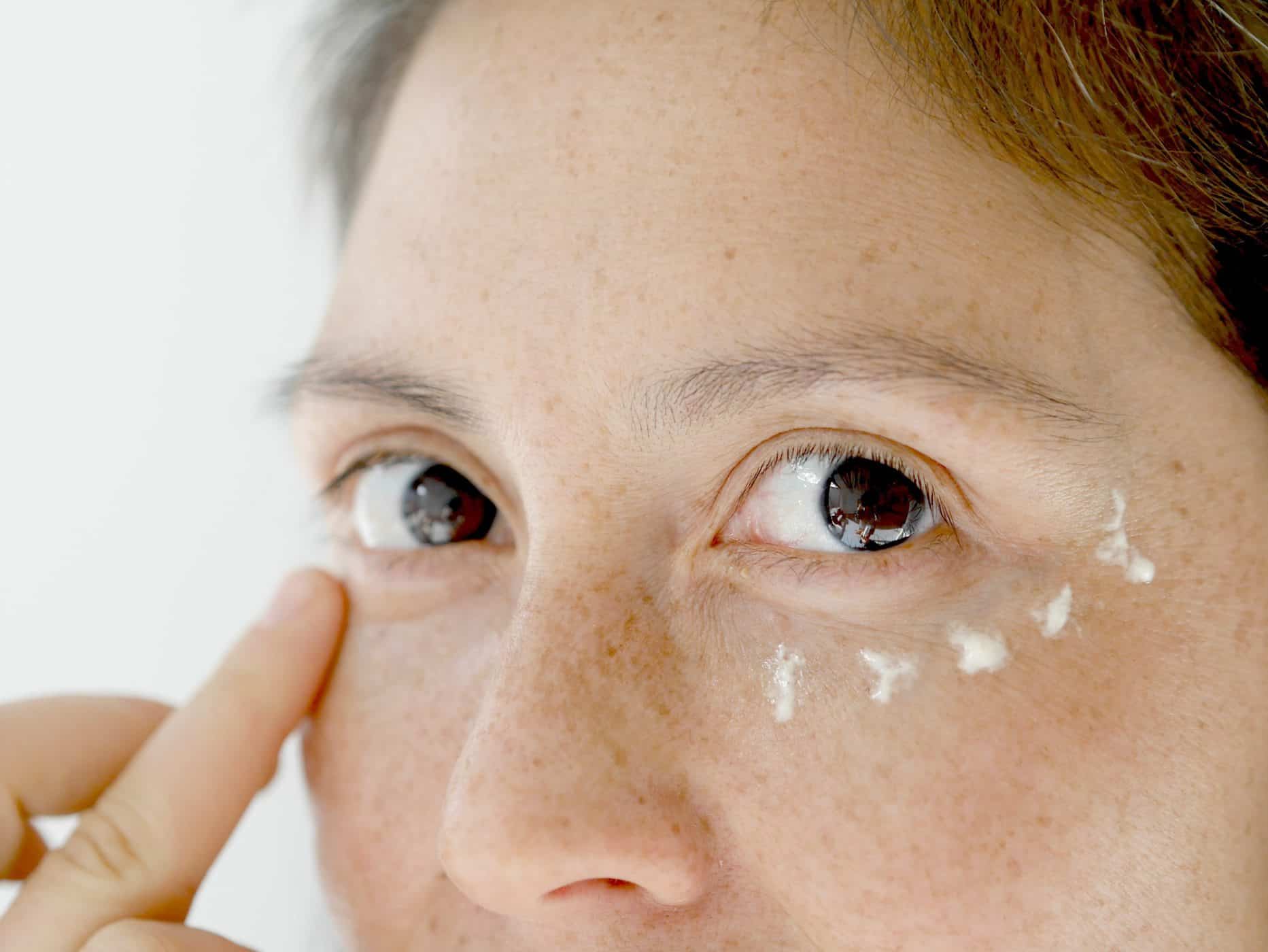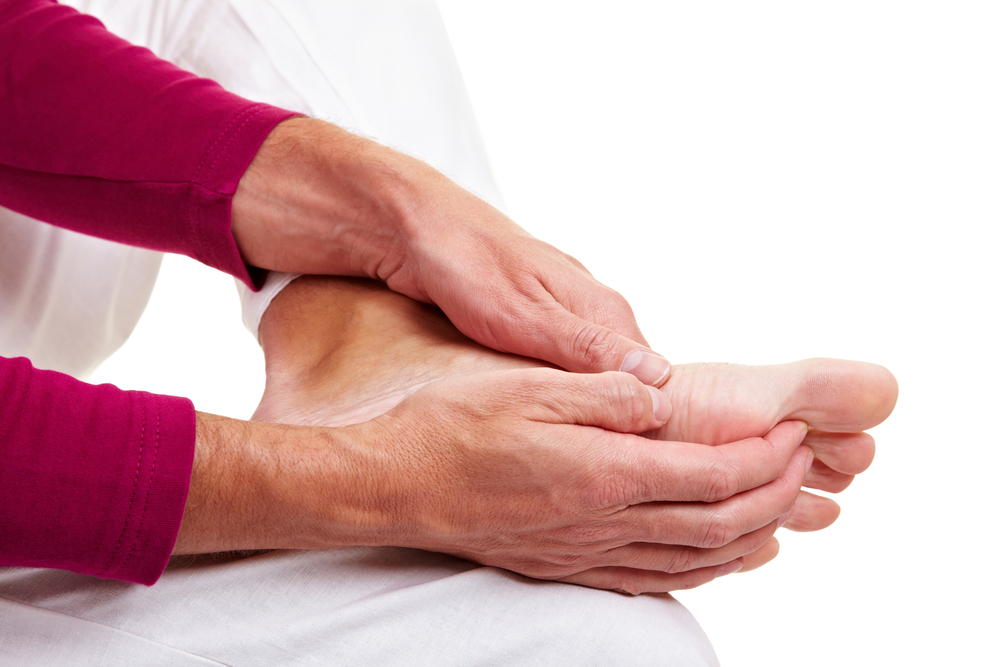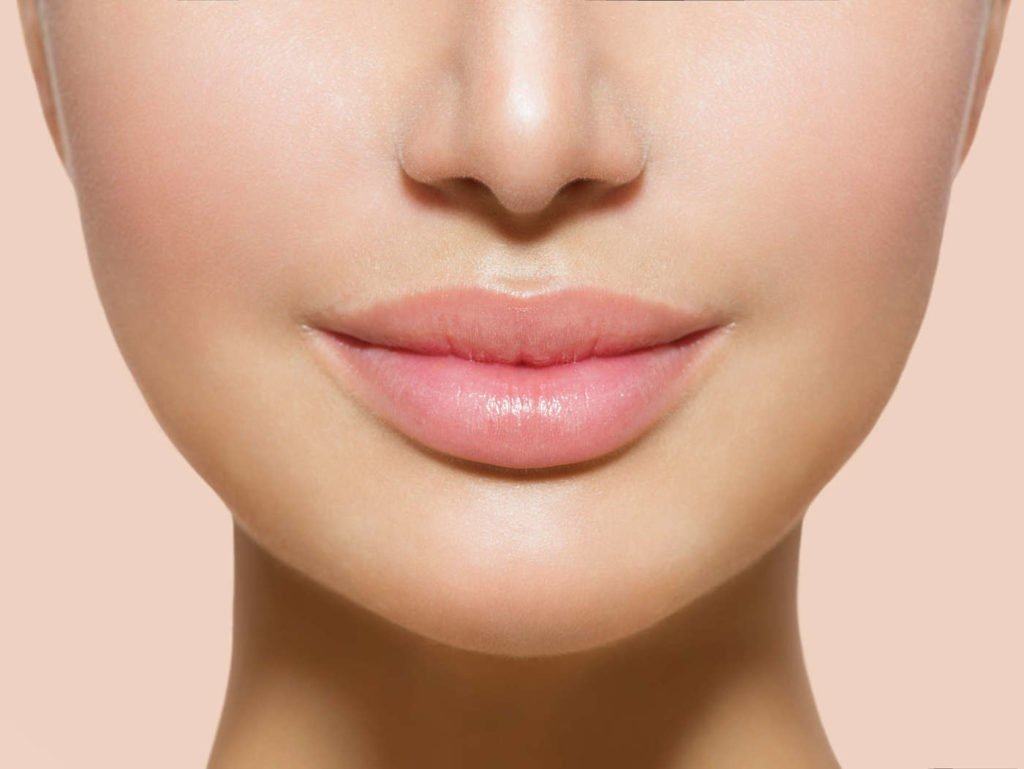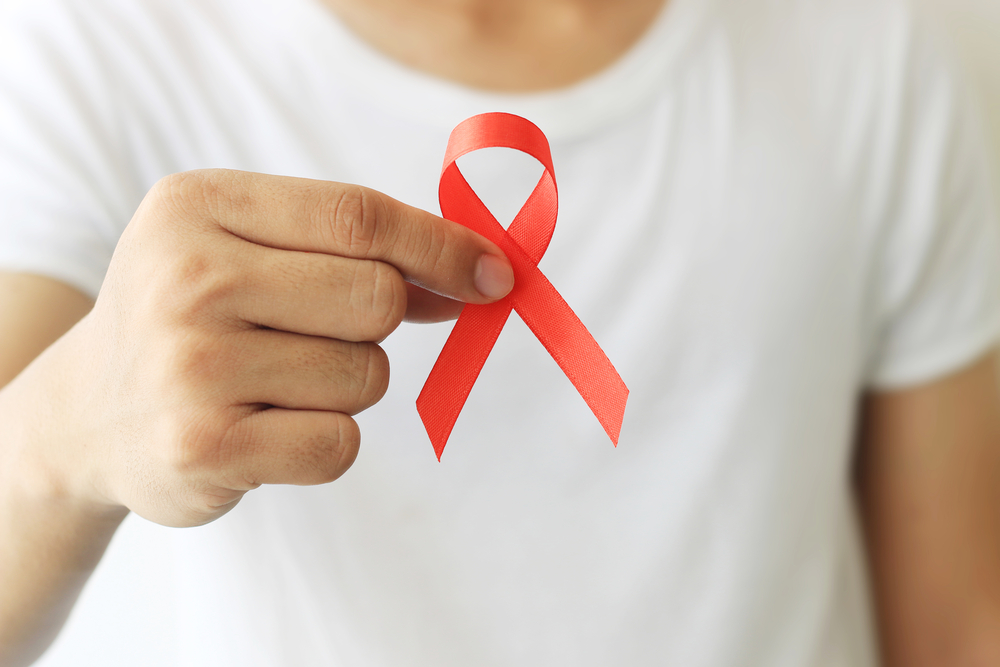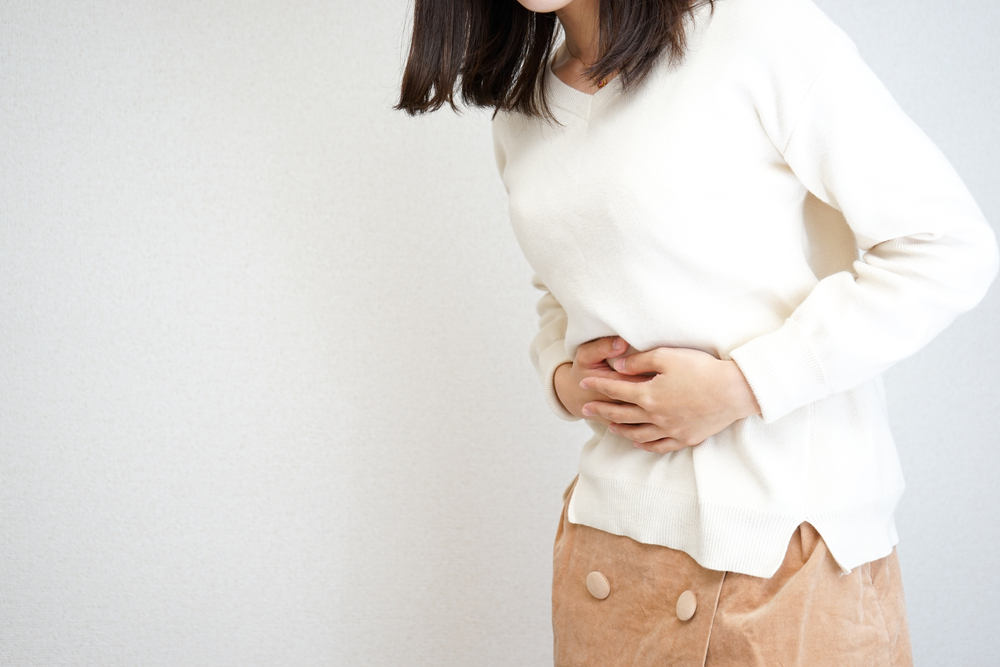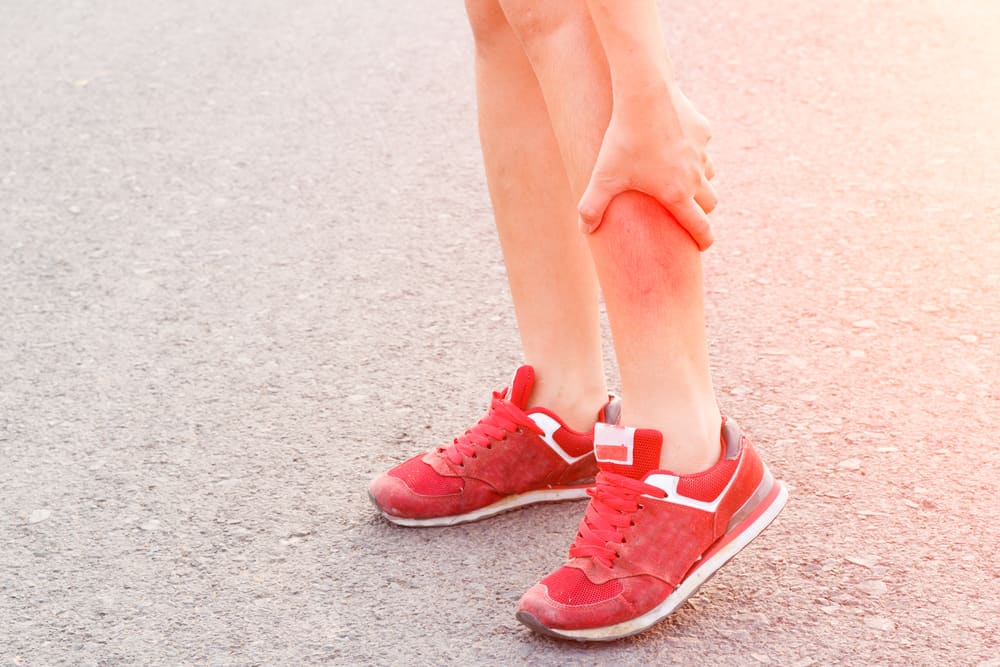Contents:
- Medical Video: At Home with Your Newborn | Skin Conditions
- The general condition causes red spots on the baby's skin
- 1. Prickly heat
- 2. Diaper rash
- 3. Baby acne
- A serious condition causing red spots on the baby's skin
- 1. Eczema
- 2. Cellulitis and impetigo
- 3. Chicken pox
- 4. The fifth disease (fifth disease)
- 5. Meningitis
Medical Video: At Home with Your Newborn | Skin Conditions
The appearance of a rash or red spots on the baby's skin is sure to make you worry. This is normal because the skin is still sensitive and the baby must adapt to his new environment. Even though it is common, you should get a proper diagnosis from the doctor about the cause of the appearance of the red spots. Because the red spots can appear as a sign of an illness.
Red spots that appear on baby's skin are difficult to distinguish. Whether it's because of insect bites, prickly heat, or other more serious conditions. If red spots occur without other symptoms being followed, chances are the baby has a mild rash and will disappear with proper skin care. However, if other symptoms occur, you should immediately check your baby's health to the doctor to get the right diagnosis and treatment.
The general condition causes red spots on the baby's skin
This condition is common but still must be considered. If the condition gets worse, it does not disappear, and the baby is increasingly uncomfortable with the condition. You should consult a doctor. The following are general conditions that cause the appearance of red spots in babies, such as:
1. Prickly heat
This condition occurs due to sweat trapped under the skin because the pores on the baby's skin are blocked. This can be caused by exposure to hot weather, hot room conditions, or clothes that are too thick. When the baby experiences this condition, usually spreads and itchy red spots appear around the neck, shoulders, chest, armpits, elbow folds, and thigh folds.
The condition will be better if the baby does not sweat from the heat, using clothes made from loose cotton so that the rash will avoid scratches, and of course by adjusting the temperature of the baby's room.
2. Diaper rash
Diaper rash occurs in the area around the baby's buttocks or areas covered by diapers. Diapers that are dirty if not replaced immediately will make the baby's skin red, moist, and cause irritation. Open skin due to irritation can allow bacteria or fungi to enter and make diaper rash worse. For this reason, babies must regularly change their dirty diapers. Then, clean it with a damp cloth or tissue before putting it on with a new diaper.
3. Baby acne
Baby acne is not like acne that appears on the skin of teenagers or adults. This acne causes a small red or white lump around the baby's cheeks, nose, and forehead. This develops about two to four weeks after birth and the cause is unknown.
Usually acne in babies will disappear by itself around three to four months without leaving a mark. By washing the face of the baby every day with mild soap, not using a lotion carelessly, and not rubbing or pinching the area of the rash, the pimples will not get worse and disappear faster.
A serious condition causing red spots on the baby's skin
Reporting from WebMD, red spots that appear on baby's skin are generally not dangerous. However, you should pay attention to the following things that indicate that the condition becomes serious if the red spots become vesicles (lumps) that contain yellowish opaque fluid or red spots turn purple (petechiae). Here are some serious conditions that cause red spots on the baby's skin that need to be watched out for.
1. Eczema
This condition causes chronic skin rashes that cause the skin to become red spots, itchy, scaly, and sometimes painful. If you continue to scratch it will cause skin irritation or can cause scarring. This can occur in infants around the age of six months and continues to grow with age. This disease can occur anywhere on the body, but tends to appear more often in part leher, wrist, leg, ankle, elbow or knee fold, and baby's bottom.
The most common eczema in infants is atopic dermatitis. This is triggered by things that are allergens or chemicals that irritate the skin, for example such as mites, dust, detergents, or pet star feathers. There is no cure for this condition. However, symptoms can be reduced by using a cream or moisturizer that is recommended by the doctor to keep the skin moist.
2. Cellulitis and impetigo
Cellulitis is caused by an infection of the skin by bacteria Streptococcus which makes the skin appear red, swollen, and feels hot. Sometimes this condition appears accompanied by fever. This must be treated immediately so that the infection does not spread quickly.
Apart from cellulitis, impetigo is also a bacterial viral infection Streptococcus or Staphylococcus which enters through open skin pores due to injury. Initially a red spot will appear which then swells to form resilient and will break if it continues to be scratched. This liquid can spread bacteria to the surrounding skin. Broken wounds that break will develop for four or six days to dry out and form sores. This condition is usually treated with antibiotics recommended by doctors.
3. Chicken pox
Chickenpox is caused by a virus and is characterized by red spots like mosquito bites. However, within a few hours, the spots will form fluid-filled resilience. This feels very itchy and is usually accompanied by a fever and in a short time can spread throughout the body.
This disease is contagious from the liquid that can break if scratched. If your baby experiences this, immediately consult a doctor for medication or ointment. After five or seven days, the scar will dry out and will not transmit the disease to other people. Chicken pox can be prevented with chickenpox vaccine.
4. The fifth disease (fifth disease)
Fifth disease or fifth disease is a viral infection whose initial symptoms are characterized by fever. Then, the red spots that are increasingly reddening will appear after one week later on the cheek area and pale around the mouth. This condition gives the impression that the baby has been slapped (slapped cheek syndrome) The rash can spread throughout the body to the palms or even the soles of the feet. This can occur for one or three weeks.
5. Meningitis
This disease can cause purplish rashes on the baby's skin. Other symptoms of meningitis are fever, pale skin, vomiting, and of course make the baby become fussy. This condition is caused by infection of the spinal cord layer by viruses or bacteria. This condition is very serious and requires doctor's help as soon as possible to avoid complications.

